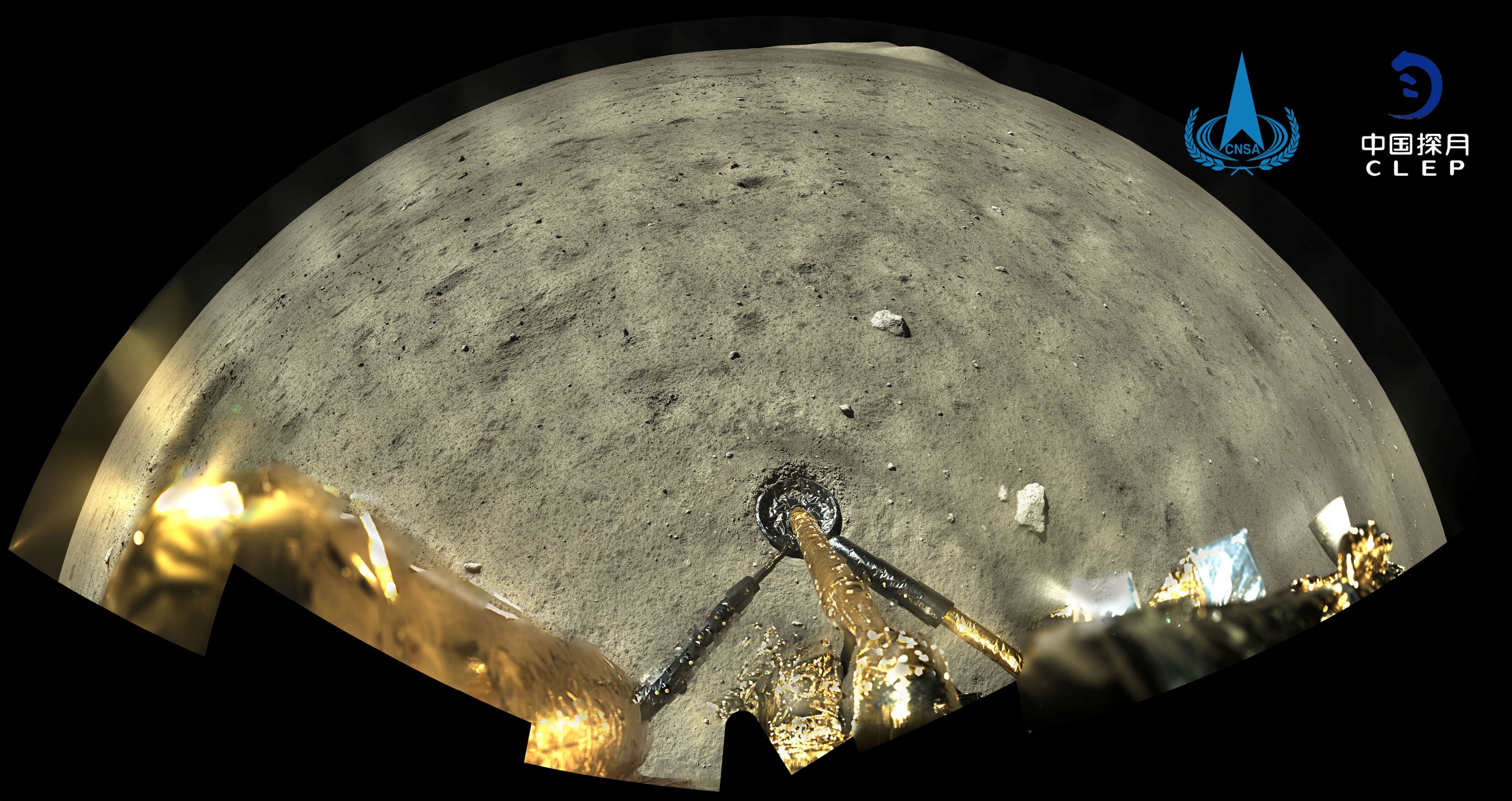China lunar mission reveals Moon was volcanically active much later than expected
‘Young’ lunar rock samples dating back to two billion years prove this finding

Your support helps us to tell the story
From reproductive rights to climate change to Big Tech, The Independent is on the ground when the story is developing. Whether it's investigating the financials of Elon Musk's pro-Trump PAC or producing our latest documentary, 'The A Word', which shines a light on the American women fighting for reproductive rights, we know how important it is to parse out the facts from the messaging.
At such a critical moment in US history, we need reporters on the ground. Your donation allows us to keep sending journalists to speak to both sides of the story.
The Independent is trusted by Americans across the entire political spectrum. And unlike many other quality news outlets, we choose not to lock Americans out of our reporting and analysis with paywalls. We believe quality journalism should be available to everyone, paid for by those who can afford it.
Your support makes all the difference.Volcanic activity was taking place on the Moon more recently than scientists previously believed, according to “young” rock samples brought back from the lunar surface by a Chinese space probe.
Lunar basalt rock samples brought back by the Chang’e-5 mission dated back approximately two billion years, while similar samples brought back by earlier space missions dated back at least three billion years.
These findings were established by an international team of researchers, including those from the Chinese Academy of Geological Sciences, said a study published in the journal Science on Wednesday.
The Chang’e-5 space probe was China’s first since the 1970s to bring back samples from the Moon. The mission landed on the lunar surface on 1 December 2020 and came back to Earth on 16 December.
It brought back samples from the Moon’s Oceanus Procellarum region, an area comprising of solidified lava from an ancient volcanic eruption.
Scientists assessed these rocks and analysed two basalt fragments from the samples using advanced techniques.
They determined the precise age of the lava flow on the Moon and found the rocks had formed from magma that erupted about two billion years ago.
This time period makes the lunar samples the youngest ones ever collected from the Moon, pointing to volcanic eruptions occurring at a much later date than earlier thought.
The research, thus, not only raises further questions on the formation of the Moon and about lunar geological activities, but also those pertaining to the Solar System.
While the Moon is about 4.5 billion years old – almost as old as the Earth – it doesn’t have the erosive or mountain-building processes that tend to erase craters on this planet.
Researchers have taken advantage of such enduring Moon craters to develop methods that estimate the ages of different regions on its surface. This is done by assessing the number of craters such regions appear to have.
The current study has helped them calibrate a crater-counting technique by comparing this technique with findings from the chemical analysis of these lava rocks.
“Of course, ‘young’ is relative. All of the volcanic rocks collected by Apollo were older than three billion years,” Bradley Joliff, director of the McDonnell Centre for the Space Sciences in the US, said in a statement.
“And all of the young impact craters whose ages have been determined from the analysis of samples are younger than one billion years. So the Chang’e-5 samples fill a critical gap,” Dr Joliff, a co-author of the study, added.
The scientists believe there must have been a heat source in the region responsible for the late volcanic activity.
However, they could not find any evidence of high concentrations of heat-producing radioactive elements such as Thorium and Uranium in deeper layers of the Moon. The presence of these elements was suggested in earlier studies as the cause of the lava eruptions.
The scientists have called for further research to find alternate explanations for the discovery.
Join our commenting forum
Join thought-provoking conversations, follow other Independent readers and see their replies
Comments